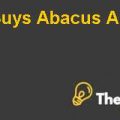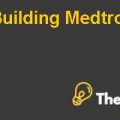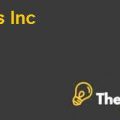
Victoria Heavy Equipment Limited
Executive summary
The Victoria Heavy Equipment limited was founded in 1902 by Walters and it is the second largest producer of mobile cranes. Organizational effectiveness helps the organization to achieve highest level profits at the end of year 2005. However, in the next two years profit decline due to increase in cost and rate of sales growth slowed.
It is assumed that this happened due to unstable organizational structure, low employee morale and poor relationship between the employees of each organizational level. Developing vertical information system and establishing hierarchal linkage could help the organization in order to overcome the problem of weak linkages and low control over the employees of each level of the organization.
Overview of the opportunity
The company is seeking to achieve the target sales of $375 million by the end of year 2021 and market of share of 25% by the end of the year 2012. Moreover, the company is dealing in only one product and has sufficient expertise and has significant demand as well. Continuing with decentralized structure, formulating strategy at each level of the structure like corporate level, business level and organizational level and by allocating sufficient resources could enable the company to achieve its desired goals and can overcome the current facing problems.
Market opportunity and Industry trends
Currently, the company has only 15% share of the US market and due to the proliferation of subprime mortgages, crane sales are expected to be reduced by 10%. The company has advantage over customized cranes and have expertise and experience also, therefore by following the focus and differentiationstrategy, the company would be able to maintain a competitive edge over its competitors and can achieve greater market share also.
Specific Elements of the Plan
Specific elements of the proposed plan are System, Strategy, Structure, Style, Staff, Shared valued and Skills. It is expected that by using Mackenzie 7 S model, each function of the plan like marketing, operations, organization and HR and financial analysis could be monitored efficiently.
Risk assessment and Contingency plans
Risk management strategy always comes from the top and it depends upon the risk appetite of the management. With respect to the risk appetite of the management, risk assessment could be conducted by using likelihood and impact of an event that can harm the organization and its personnel. In order to reduce the consequences of highly risky hazards, contingency plans should be designed in order to deal with uncertainties.
Implementation
The environment is constantly changing, therefore in order to remain competitive the company should restructure the organization at each level of business and it should develop a constantly changing and innovative culture at each level of the organization. It could help the organization by creating linkage between each employed of each level of the organization and it could create a receptive attitude towards change which could help the organization towards achievement of organizational goals.....................
This is just a sample partial case solution. Please place the order on the website to order your own originally done case solution.









